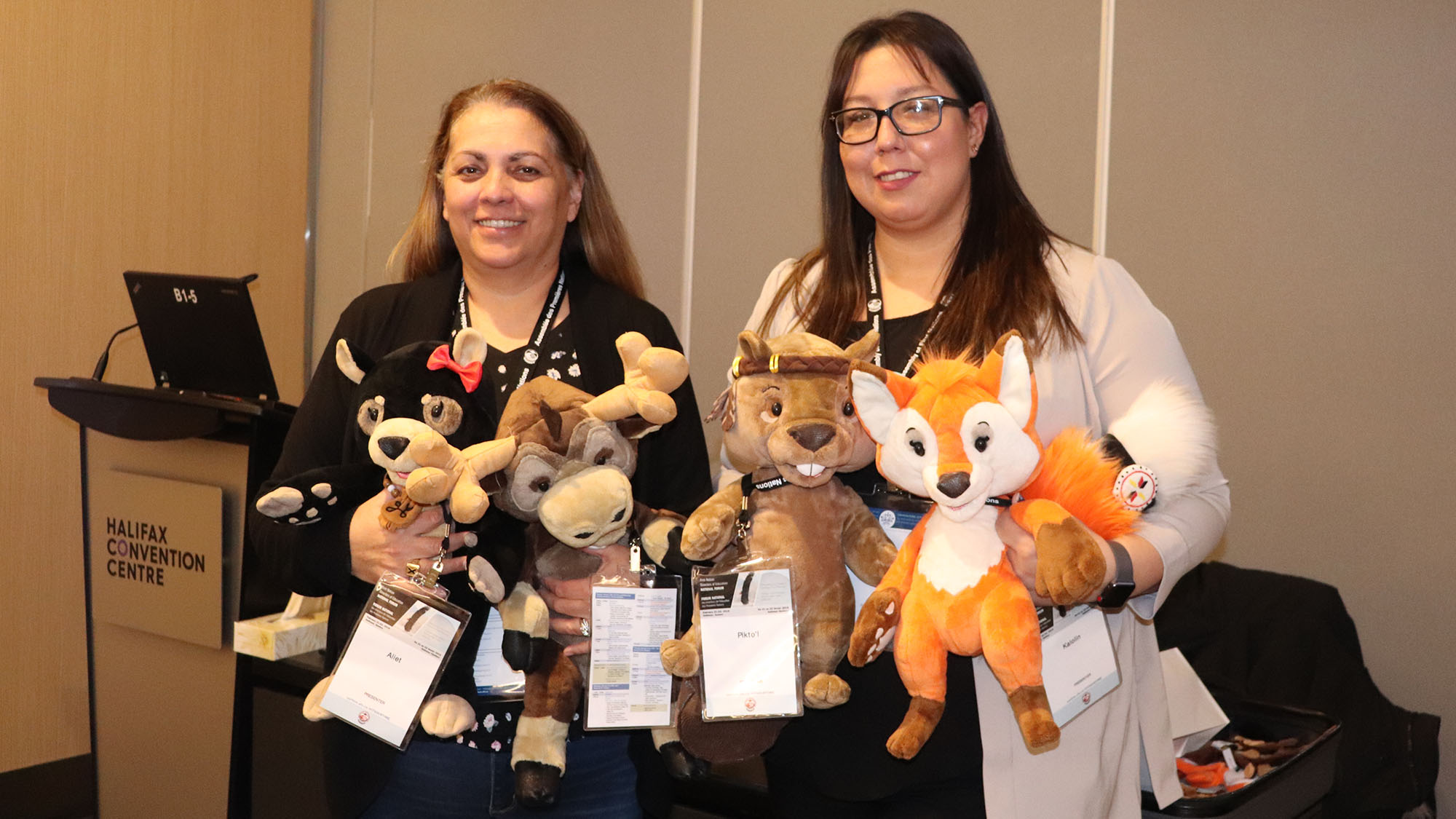Indigenous
Puppets and iPads are teaching children language skills
Program designed for the Mi'kmaq language, but is incorporating others

caption
Yoland Denny (left) and Blaire Gould (right) hold up the four puppets Aliet, Antle, Pikto'l and Kalolin.Instead of puppets teaching children through a TV screen, they are now teaching them with an iPad screen in real life.
Blaire Gould and Yolanda Denny from Mi’kmaw Kina’matnewey introduced the puppets to a room full of educators at the First Nations Directors of Education National Forum on Thursday in Halifax.
Each puppet deals with different issues, has a different family structure and wears different Mi’kmaq clothing. Antle, the moose and the first character they created, wears a neck medallion. Pikto’l the beaver wears a headband, while Aliet the bear wears a medicine pouch and Kalolin the fox wears a tail medallion.
With the help of partners, they’ve developed a program to help improve oral learning, particularly with the Mi’kmaq language.
“This is Mi’kmaq developed for Mi’kmaq people,” said Gould.
Even though the program was developed with Mi’kmaq in mind, Gould said it can be used for any language and by any teacher — not just ones who speak Mi’kmaq.
The program includes big puppets, hand puppets, finger puppets, apps and books. The books come in Mi’kmaq, and English. There is also one with just the illustrations. The illustration books allow for creativity in the storyline and also other languages, said Gould.
Assessment software and activities are also included with the books. The assessments are done with the big puppet and an iPad and focus on an individual child’s learning. Along with the questions the child answers, the assessment has questions for the caregivers, elder, and teacher.
“It’s Antle having meaningful conversations with Natalie through the iPad,” Gould said while demonstrating the software with a pretend student. “The teacher is just invisible at that state.”
The puppets have special sensors in their noses that allow them to swipe and click on the iPad. The puppets are, in real life, interacting with students in front of them.
Philip Prosper, a teacher at East Antigonish Education Centre and Academy, said he can’t wait to have the program in his school.
The school’s population is a roughly a quarter Mi’kmaq students, he said.
“Right now, we develop our own,” said Prosper. “It’s not like other programs, like for instance social studies where … there’s a book available, you’re not trying to pick your own brain to have a lesson plan.”
The program has been used by Mi’kmaw Kina’matnewey schools for three years, but they want to increase usage. Gould said they are working with the provincial government and are testing it in a few other schools.
She’s hoping for a bigger roll out in the fall.
